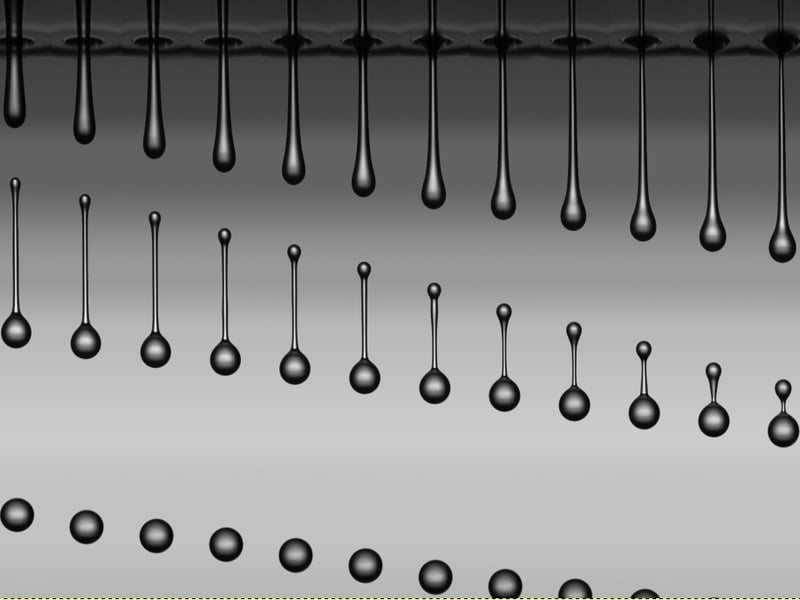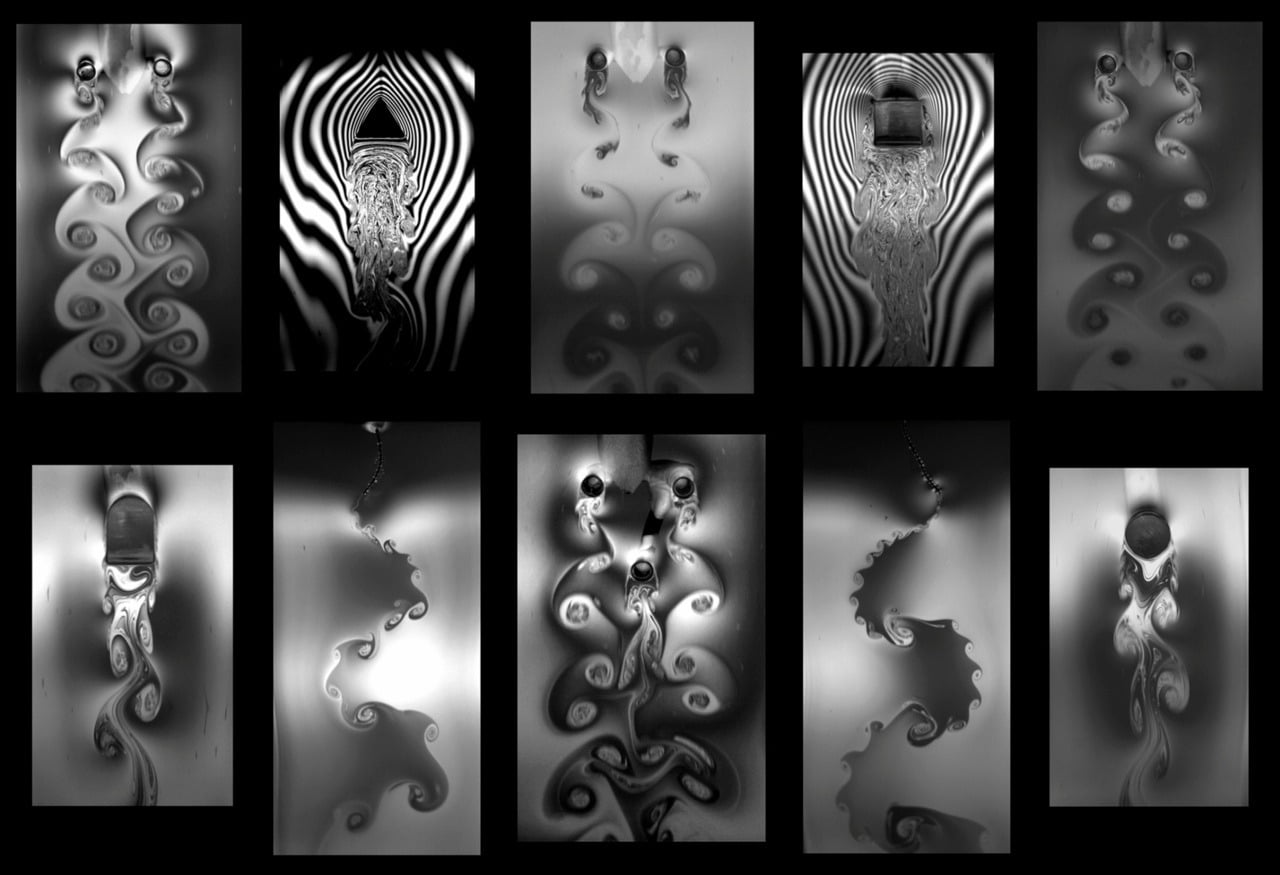Inkjet printers produce droplets at an incredible rate. A typical printhead generates droplets that are about 10 picoliters in volume – that is, ten trillionths of a liter – moving at about 4 meters per second. Resolving the formation of those droplets would require ultra-high speed imaging at millions of frames per second. Instead researchers devised an alternative method to capture droplet formation, based on stroboscopic techniques. In this case the strobe is a 7 nanosecond laser pulse (7 billionths of a second) that illuminates a given droplet twice. By doing this for many droplets, the researchers can create a highly detailed time series like the one above, which shows the inkjet breakup and droplet formation. Here each droplet is 23 micrometers wide – about one-third the width of a human hair. (Image credit: A. van der Bos et al., source)
Tag: high-speed photography

Floral Still Life
Fluid motion is captured as a floral still life in these high-speed photos by Jack Long. The artist keeps mum about his set-up but notes that these are single capture events, not constructed composites. It looks as if the blossoms are created from the impact of a falling fluid with the upward jet that forms the stem. The leaves and vase appear to be created from upward splashes, but whether those are generated by vibration or dropping an object is unclear. See Long’s Flickr page for more. (Photo credit: Jack Long via Gizmodo)

Soap Film Flow Viz
Flowing soap films provide an educational and beautiful method for visualizing the wakes of objects in two-dimensional flows. High-speed photography highlights the interference patterns on the soap film, providing detail without the necessity for the particulate tracking of other flow visualization methods. Highlights here include wakes behind bluff bodies, interacting cylinders, and flapping flags. (pdf) #

Bursting Bubbles
A soap bubble bursts when its surface tension is broken, and, although from our perspective, the bubble bursts instantly, the process is actually directional. The bubble disintegrates from the point of contact outward. See it in high-speed video here or see more photos here. (Photo credit: Richard Heeks) #

Water Balloon Photography
Photographer Edward Horsford uses high-speed photography to capture water balloons as they burst. On Earth, of course, gravity wins over surface tension, but the results are very different in microgravity. See the technical description for how Horsford gets his shots and look at more of his work on Flickr. (via NPR)






